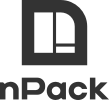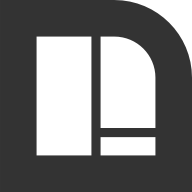
Die-Cut Handle Bag
HANDMADE PAPER CARRIER BAG WITH GRIP HOLES
Luxury Paper Bags / Die-cut handle bag
Resistant, advanced customisable design
We’re adding the die-cut handle as a functional element that is both beautiful to look at and comfortable to use for the carrier. This particular element allows for a refined and customised experience for the end user.
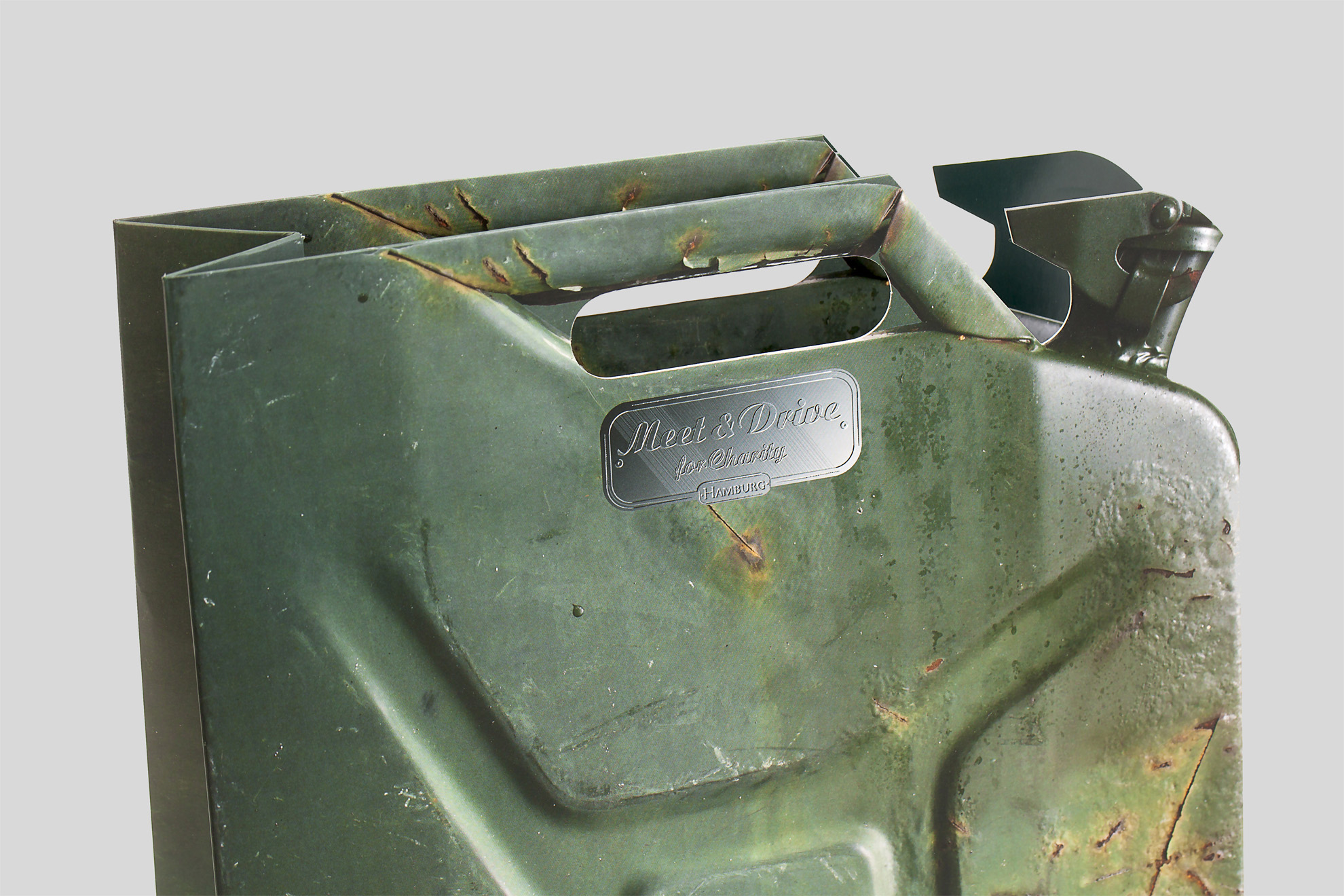
CUSTOMISATION OPTIONS
Bag style options
DIE-CUT HANDLES
On bag body
HANDLE SHAPE
Standard or custom
DESIGN UPGRADES
Hang tags, custom bag body elements and extra handles
Detailed info below:
Bag Anatomy; Design Upgrades
MINIMUM ORDER – 100 PCS
Sizes, materials & finishes
SIZES
Variety of stock cutters or custom size by request
PREMIUM PAPERS
White or colour-dyed papers made in Europe, smooth or textured in different patterns
PRINTING OPTIONS
CMYK or Pantone printing for exact colour match
LUXURY FINISHES
Foil blocking, foil embossing, foil debossing, blind embossing, blind debossing or spot UV
COATING
Matt, gloss or soft touch lamination

Share more about your project
Please note, your current choices will be saved if you close the window to review the options.
1300 +
STOCK SIZE CUTTERS
AVAILABLE
60 +
DESIGN ELEMENTS READY FOR
PRODUCTION
100 +
PREMIUM PAPERS IN
PRODUCTION
Structural elements
This bag style combines the basic body shape with numerous variants of standard and custom handle offcut outlines.
The die-cut handle bags use a larger reinforced turnover top compared to other bags. The grip holes are punched at a customisable distance from the turnover top crease, keeping in mind the technological requirements.
Bag body materials
The bag body is made from paper or paperboard. The material thickness is usually around 200 to 300 g/sq.m.
Reinforcement
To increase the bag’s strength and reliability, we add reinforcing layers. They are placed on the inside of the bag’s bottom and under the turnover top. The reinforcing layers are permanently glued to the body material.
All reinforcing bottom pieces have a thickness of at least 350 g/sq.m. The TOT reinforcement is ca. 700 g/sq.m. per side. This extra support adds to the bag’s high-quality standard.
The die-cut handle bags use a larger reinforced turnover top compared to other bags. The grip holes are punched at a customisable distance from the turnover top crease, keeping in mind the technological requirements.
Bag body materials
The bag body is made from paper or paperboard. The material thickness is usually around 200 to 300 g/sq.m.
Reinforcement
To increase the bag’s strength and reliability, we add reinforcing layers. They are placed on the inside of the bag’s bottom and under the turnover top. The reinforcing layers are permanently glued to the body material.
All reinforcing bottom pieces have a thickness of at least 350 g/sq.m. The TOT reinforcement is ca. 700 g/sq.m. per side. This extra support adds to the bag’s high-quality standard.
Handle Shape
Ready tooling for standard-shaped grip holes is in store. For a more sophisticated paper carrier bag appearance, we can work with custom-shaped die-cut outlines and specially ordered tooling.
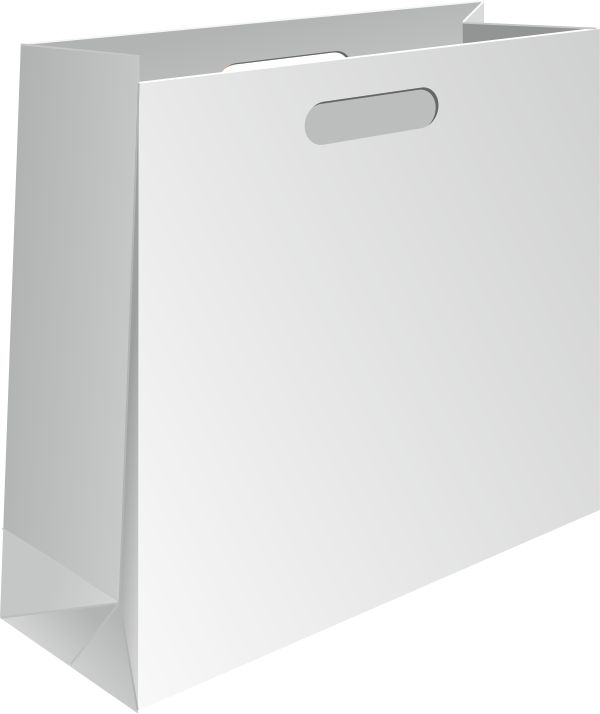
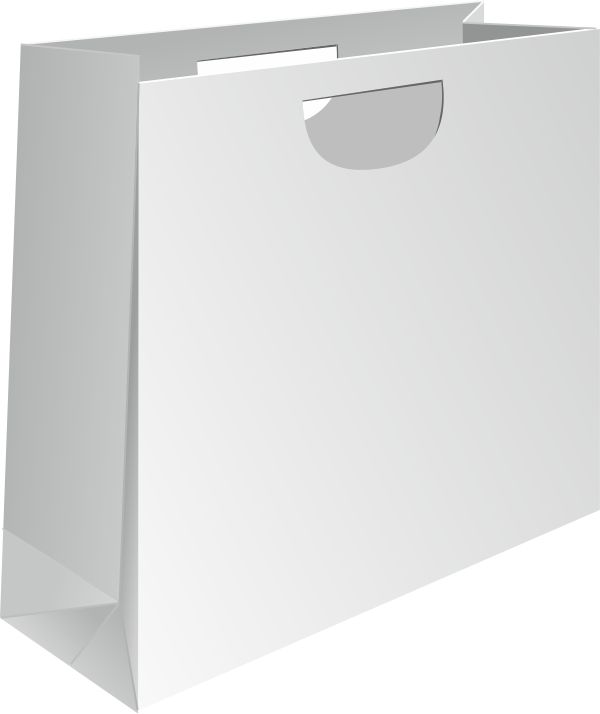
The solid and reusable die-cut handle carrier bag has secure double-reinforced grip holes
Make it remarkable
The bag upgrades are packaging design elements for extra functionality, custom inner shape or new capacity. Each of them presents a great opportunity to create tailored packaging solutions.
Swing Tags
The swing tags are additional cardboard elements that hang on a thin string. The tags may have custom shapes and the strings come in different styles.
There are three possible attachment positions: on the handle, on the bag body or on the turnover top. Design tips
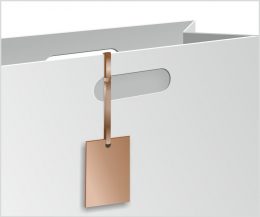
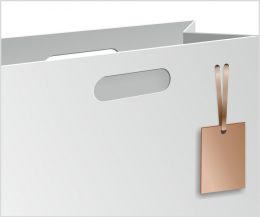
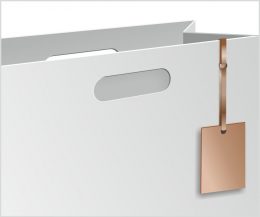
Bag Body Elements
These options add to the bag’s appeal and bring its functionality to a new level.
These elements have different customisable design features, such as the contrasting inlay colour and texture, the clear window outline or the separator’s style and attachment. Design tips
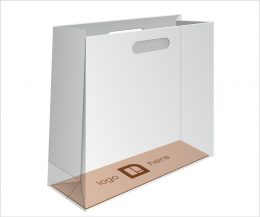
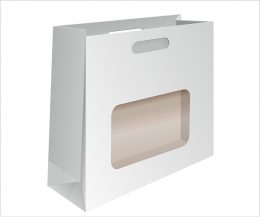
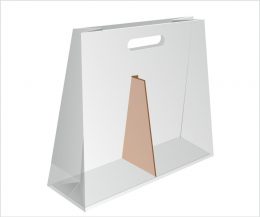
Extra Handles
The extra handles add an alternative way of carrying the paper bag.
In addition to the basic die-cut handle, various types of ropes or ribbons may be included in a combined handle design. Paperboard handle cushions are a great, optional enhancement for greater comfort.
Design tips
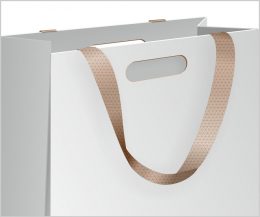
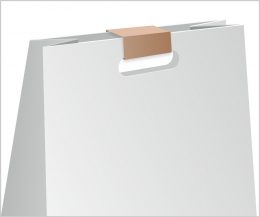
More upgrade options can be specially developed and produced for specific product and brand requirements.
Inside look at real-life projects
Are you interested in a similar product?
Share the project specifics and product features you are considering and we will come back to you with comments and price options.

Share more about your project
Please note, your current choices will be saved if you close the window to review the options.
Project Brief
1.
PROJECT OUTLINE
We highlight the purpose and key elements of the packaging project. We start a discussion about product type, sizes, colours, materials, branding methods and more.
INITIAL QUOTING
Based on project specifics in combination with the established design features and quantities, we quote exact unit cost or а rough price range and all one-time expenses.
Sustainability Management
We transparently share choices of packaging features for a sustainable packaging product through a well-managed design and manufacturing process.
PRODUCT RECYCLABILITY
RECYCLED MATERIALS
CARBON FOOTPRINT MANAGEMENT
PAPER OFFCUTS UTILISATION
SIZE AND DESIGN OPTIMISATION

